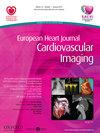应用超声心动图和生物标志物早期监测儿童蒽环类药物引起的心脏毒性:一项前瞻性研究
引用次数: 0
摘要
资金来源类型:公共拨款-仅限国家预算。主要资助来源:CIHR蒽环类药物,常用于癌症治疗,可引起心肌损伤,治疗过程中导致心力衰竭,治疗后数十年仍有心脏影响。治疗期间心脏毒性的监测主要基于超声心动图功能标记物的使用,如射血分数和最近的心肌应变成像。一些研究还关注了肌钙蛋白和BNP等生物标志物的效用。由于缺乏更大规模的前瞻性研究,这种监测策略的效用仍然存在争议。本研究的目的是前瞻性地描述蒽环类药物治疗期间和治疗结束后12个月对超声心动图功能参数和心脏生物标志物(高敏感性肌钙蛋白T和NT-Pro BNP)的影响。在目前的研究中,我们想看看治疗期间的监测参数是否能预测治疗后12个月的左心室功能。这是一项前瞻性多中心巢式病例对照研究,256名诊断为需要蒽环类药物治疗的癌症儿童。在开始蒽环类药物治疗前、治疗方案期间和治疗完成后12个月获得基线功能超声心动图参数和心脏生物标志物。根据12个月超声心动图的缩短分数,将患者分为两组:1组患者的缩短分数正常(FS³28%),而2组患者的缩短分数减少(FS < 28%)。共进行了917次回声检查,其中376次发生在治疗期间。在治疗期间获得的回声中,27例(7%)FS降低,22例出现新发功能障碍。治疗结束12个月后,232例患者FS正常(第1组),24例患者FS降低(第2组)。两组患者在基线时收缩功能和心脏生物标志物正常,但第2组患者在诊断时年龄较大(13.2岁(11.8-16)vs 6.5岁(3.4-13.2),p= 0.003),并且接受较高的累积蒽环类药物剂量(200 mg/m2 (143-318) vs 125 mg/m2 (75-200), p= 0.005)。2组1 / 3(8/24)患者在治疗期间至少出现1次异常回声,而正常组为7% (16/232),P < 0.001。然而,在此期间至少有一种异常生物标志物的患者比例在两组之间是相似的。结论(5)蒽环类药物累积剂量较高的患者和治疗期间FS异常的患者在治疗后12个月发生心功能下降的风险较高。在治疗期间,高敏感性肌钙蛋白和NT-Pro BNP水平不能区分早期收缩功能降低风险的患者。这些早期结果与长期心功能的关系仍有待证实。本文章由计算机程序翻译,如有差异,请以英文原文为准。
Early surveillance of anthracycline induced cardiotoxicity in children using echocardiography and biomarkers: A prospective study
Type of funding sources: Public grant(s) – National budget only. Main funding source(s): CIHR
Anthracyclines, which are commonly used in cancer treatment can induce myocardial damage, result in heart failure during treatment and have cardiac effects even decades after treatment. Monitoring of cardiotoxicity during treatment is largely based on the use of echocardiographic functional markers like ejection fraction and more recently myocardial strain imaging. Some studies have also looked at the utility of biomarkers like troponin and BNP. The utility of this surveillance strategy remains controversial as larger prospective studies are lacking.
The aim of this study was to prospectively describe the impact of anthracycline treatment on echocardiographic functional parameters and cardiac biomarkers (high sensitivity troponin T and NT-Pro BNP) during the treatment period and twelve months after completion of treatment. In the current study we wanted to look at whether monitoring parameters during treatment were predictive of left ventricular function 12 months after treatment.
This was a prospective multi-centre nested case-control study of 256 children diagnosed with cancer requiring anthracycline therapy. Baseline functional echocardiographic parameters and cardiac biomarkers were obtained prior to starting anthracycline therapy, during the treatment protocol, and 12 months after treatment completion. Patients were assigned to one of two comparison groups based on the fractional shortening at the12-month echocardiogram: patients in group 1 had normal fractional shortening, (FS ³ 28%) while patients in group 2 had reduced fractional shortening (FS < 28%).
A total of 917 echoes were performed, 376 of these occurred during the treatment period. FS was reduced in 27 (7%) of echoes obtained during the treatment period with 22 patients developing new onset dysfunction. Twelve months after treatment completion 232 patients had normal FS (Group 1), while 24 patients showed reduced FS (Group 2). Both groups had normal systolic function and cardiac biomarkers at baseline, however patients in group 2 were older at diagnosis (13.2 years (11.8-16) vs 6.5 years (3.4-13.2), p = 0.003) and received a higher cumulative anthracycline dose (200 mg/m2 (143-318) vs 125 mg/m2 (75-200), p= 0.005). One third (8/24) of patients in group 2 had at least 1 abnormal echo during the treatment period compared to 7% (16/232) in the normal group P < 0.001. The proportion of patients with at least one abnormal biomarker during this period however, was similar between groups.
Conclusion(s)
Patients receiving higher accumulative anthracycline doses and those with abnormal FS during the treatment period are at higher risk of having reduced cardiac function 12 months after treatment. High sensitivity troponin and NT-Pro BNP levels during the treatment period fail to discriminate patients at risk of developing early reduced systolic function. The relationship of these early results to long term cardiac function remains to be demonstrated.
求助全文
通过发布文献求助,成功后即可免费获取论文全文。
去求助

 求助内容:
求助内容: 应助结果提醒方式:
应助结果提醒方式:


